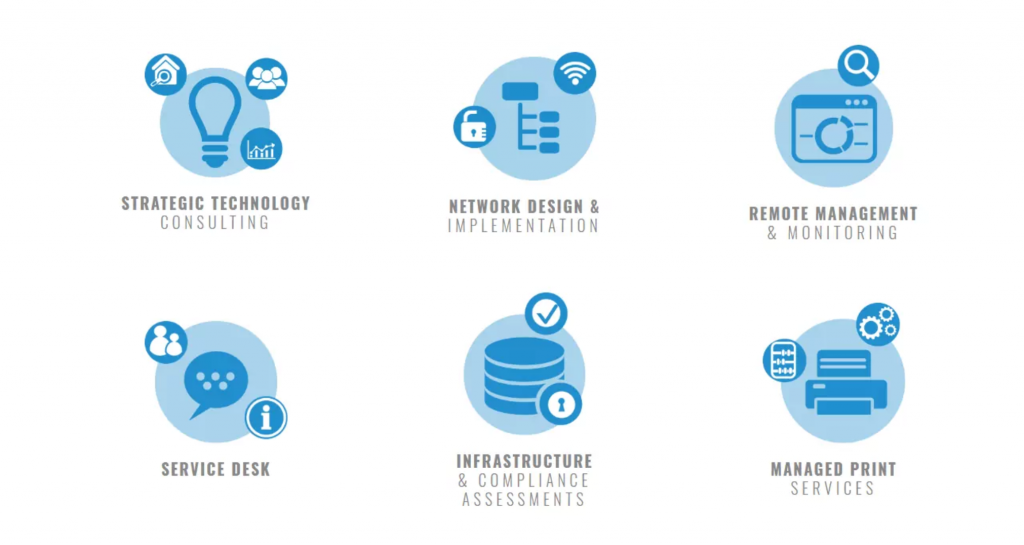
How software defined networking helps secure your organization
January 27, 2020
Advancements in Technology That Are Making Truck Driving Easier and Safer
March 23, 2020Where vCIOs Fit Into Your Corporate Alignment

In rapidly evolving tech and software markets, information is a critical commodity. That’s why more and more companies create Chief Information Officer, known as CIO, executive positions to align disparate interests, a problem that affects most companies. CEOs, CFOs and board chairpersons often concentrate on their specific areas of interest, but someone needs to get everyone working toward common company goals in the information age when anyone can publish a casual comment that produces unintended consequences.
Why More Companies Choose a Virtual CIO
Many small-to-medium-sized companies can’t afford to hire an in-house Chief Information Officer, so they outsource the position to a person or team with experience in working with technology, communications, social media and strategic planning. A virtual CIO, vCIO, has an established office and the technology resources to handle the job efficiently for a monthly fee.
These experts keep abreast of new technology, marketing trends, investment markets and creative viewpoints that can give companies a competitive edge in marketing, recruiting, sales development and special IT projects.
Virtual Executives Can Perform Any of the Responsibilities of In-house CIOs
According to Harvard Business Review, alignment is critical in today’s business processes, and the CIO bears ultimate responsibility for aligning different segments of an organization. [1] Business strategy must align with the company’s ultimate purpose and intermediate goals for it to be successful. As an example, the HBR article mentions McDonald’s and Disney as companies that align their main goals with every department and initiative.
McDonald’s serves about one percent of the world’s population each day by aligning store operations and the company’s culture with fanatical attention to detail and standardization. Disney tries to “create happiness by providing the finest in entertainment for people of all ages, everywhere.” Disney pursues that goal by producing great entertainment, in-person experiences, consumer products and multimedia content.
Virtual CIO executives can handle any of the duties of a CIO since most of a CIO’s duties involve communications, content creation, aligning company processes and strategic planning. All these duties can be handled remotely by advanced technology.
How Virtual Chief Information Officers Fit into Companies
The first benefit of outsourcing vCIO duties is simply financial. The U.S. Bureau of Labor Statistics reports that the average salary of computer and information systems managers is $142,530 per year. [2] Add the expenses for employee benefits, training, incentives and recruitment, and that figure easily rises to $300,000. CIOs tend to earn higher salaries, and the cost of recruiting and hiring a CIO becomes prohibitive for many companies.
Companies can control expenses by outsourcing the position as needed. Some of the duties that a virtual executive can handle include:
- Strategic Planning
It helps to outsource planning to an unbiased third-party with experience in high-level technology – experts who can bring a critical eye to waste, mismanagement and dead-end initiatives that don’t support company goals. - Systems Evaluation
A virtual consultant can evaluate company systems and initiate changes that make the systems perform flawlessly. - Compliance
Compliance strategy is one area that nobody wants the responsibility of managing. Virtual executives can monitor compliance standards across multiple company channels that include SOX, HIPAA, PCI and other regulations, community standards and industry best practices. - Technology Problems
Technology costs can become a sinkhole where money drains from a company through breakdowns, unreliable vendors and the multi-pronged horns of a real dilemma – downtime. A CIO, either in-house or virtual, works hard to minimize disruptions and proactively schedules necessary maintenance to boost uptime. - Technology Advocacy
Technology evolves rapidly, and someone needs to push the boundaries to install new technology, educate regular staff members and special projects teams, encourage companies to adopt AI and train everyone in new tech trends. - Team Benefits
Most virtual chief information officers have staff that can pitch in when problems arise. Qualified technicians can be available 24/7 to solve problems, troubleshoot computer malfunctions, update systems and address security concerns. - Security Threats
One of the biggest challenges for CIOs is identifying and mitigating security threats. Cyber attacks and data breaches can prove devastating to a company’s business efforts, and a connected team of information experts can identify risks, establish safety best practices and manage security updates. - Business Continuity
There are many threats to business continuity. These include natural disasters, technology malfunctions, security breaches, human error and power outages. An expert CIO plans recovery options, backup strategies and data protection tactics.
Outsourcing CIO duties to an experienced team of virtual experts controls costs for maximum efficiency. Companies can assign technology responsibilities as needed to meet company goals and budget limitations.
Strategic Alignment Issues
Strategic alignment can be defined as the process of ensuring that all business processes and elements – including marketing, customer service, manufacturing and sales – are organized to support the company’s vision, goals and core concept. That’s a job that CIOs handle, and without their overall guidance, companies often fail to accomplish their most important goals.
For example, Facebook, which was enormously successful, struggled when the company went public because nobody developed a profitable marketing strategy to support the social media behemoth’s long-term goals. [3]
Companies can test their alignment by asking some simple questions that include:
- Does the company have a well-defined purpose and a business strategy to achieve it?
- How well does the company’s business strategy achieve company goals, and should the strategy be fine-tuned?
- What processes are most effective for meeting company goals – such as better customer service, technology innovation, great customer experiences or high-quality products?
If a company can’t answer these questions, it either doesn’t have a CIO or the CIO isn’t doing the job. A virtual chief information officer specializes in disseminating critical information, and everyone in the company should have background knowledge of what the company is doing, what its goals are and what role each employee and department plays in achieving those goals.
Examples of Successful Strategic Alignment
ARM is a company that most people don’t know about, but it manufactures microprocessors that are used by 95 percent of the world’s devices – such as iOS and Android tablets and smartphones. [3] The company aligns its staff of 3,500 with core values and a strong sense of purpose. The staff collaborates successfully with external partners, shares knowledge and supports technology advances over insular concerns.
Another great example of successful alignment is Southwest Airlines. The company developed a clear business goal: “Dedication to the highest quality of Customer Service delivered with a sense of warmth, friendliness, individual pride, and Company Spirit.” [4] The company chose the right business strategy to support the goal, and all its employees buy into the goal by striving to deliver superior customer service.
Toyota also exerts strong management to align a vast organization in the pursuit of growth, excellence and a harmonious work ethic. Each employee receives continuous training in meeting Toyota’s standards and understanding product quality. [4]
Strategic alignment should be the focus of every company manager, and it’s the job of the CIO to lead from the top. Southwest Airlines, ARM and Toyota are excellent examples of companies that focus on proper strategic alignment.
IT Services from an MSP
There are levels of service provided by a managed service provider, known as an MSP, that can close the gaps in any company’s information systems. Managed services can provide the following services related to information management:
- Managing a company’s IT infrastructure
- Hardening cybersecurity processes
- Managing clients’ user accounts
- Outsourcing hardware
- Offering Software-as-a-Service
- Providing technical support services
- Managing software applications
- Developing and managing proprietary apps
IT services allow companies to customize their business strategy, meet their overall business goals, manage complex information systems and outsource the CIO function to a team of experts.

Where Does a vCIO fit? Everywhere
Virtual chief information officers can handle important duties at every level of company operations, but their primary mission is to ensure that everyone in the company is invested in the company culture and its business goals. Managed services provide solutions to problems that include formulating goals, managing the IT budget, fine-tuning business processes and encouraging technology upgrades.
Even small companies are not immune to the challenges of establishing a business identity, enlisting everyone to work toward key goals, maintaining current infrastructure and adopting new technology when needed. The virtual chief financial officer typically takes a broad view of company processes and guides decision-making that favors progress toward meeting company goals for the big picture. Other services can manage operational goals, special projects and the immediate need for special technology services.
References:
[1] Hbr.org: How Aligned Is Your Organization?
https://hbr.org/2017/02/how-aligned-is-your-organization
[2] Bls.gov: Computer and Information Systems Manager
https://www.bls.gov/ooh/management/computer-and-information-systems-managers.htm
[3] Hbr.org: A Simple Way to Test Your Company’s Strategic Alignment
https://hbr.org/2016/05/a-simple-way-to-test-your-companys-strategic-alignment
[4] Advanceebusinesscsulting.com: Strategic Alignment Business Cases
http://www.advancebusinessconsulting.com/advance!/strategic-alignment/strategic-alignment-business-cases.aspx
